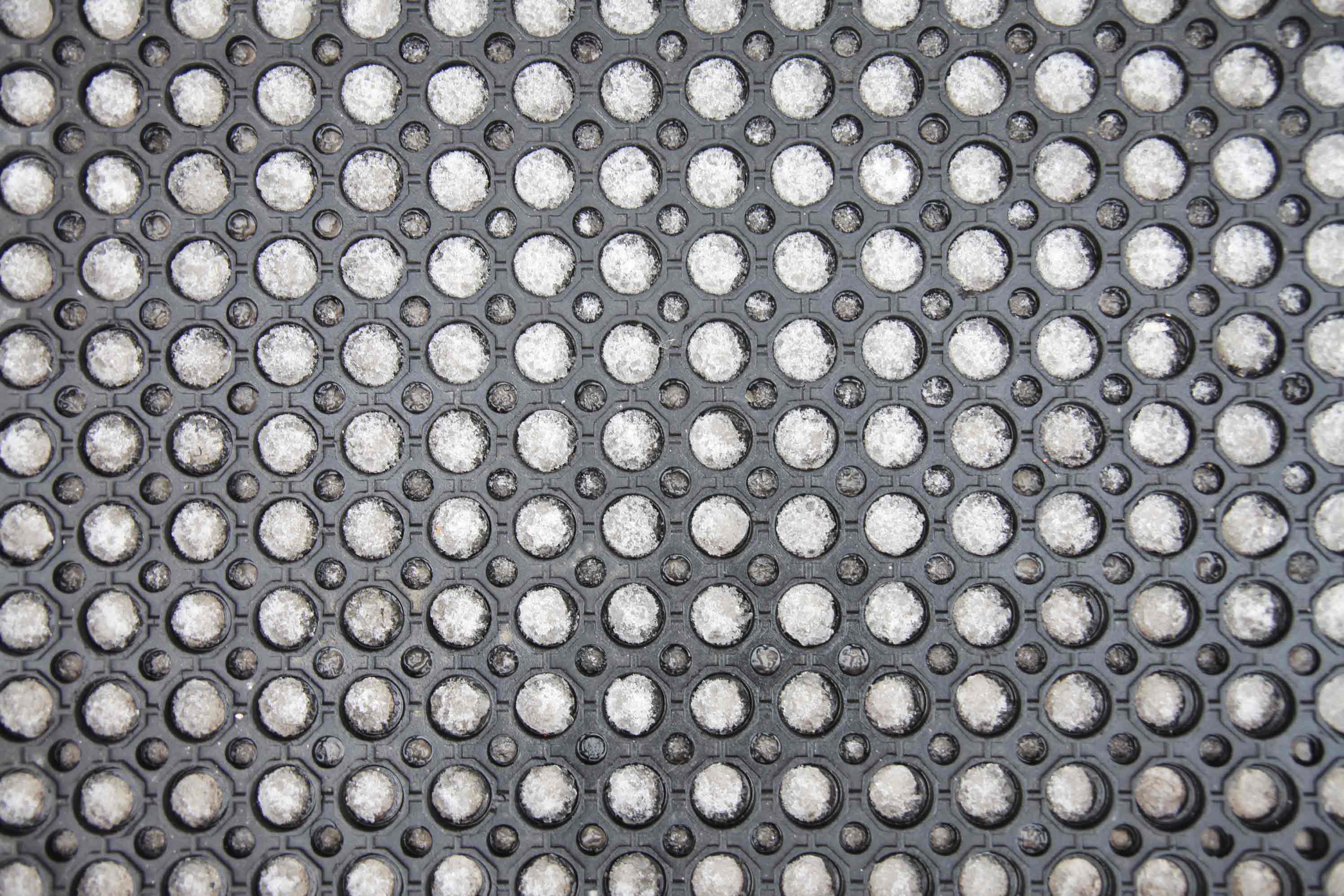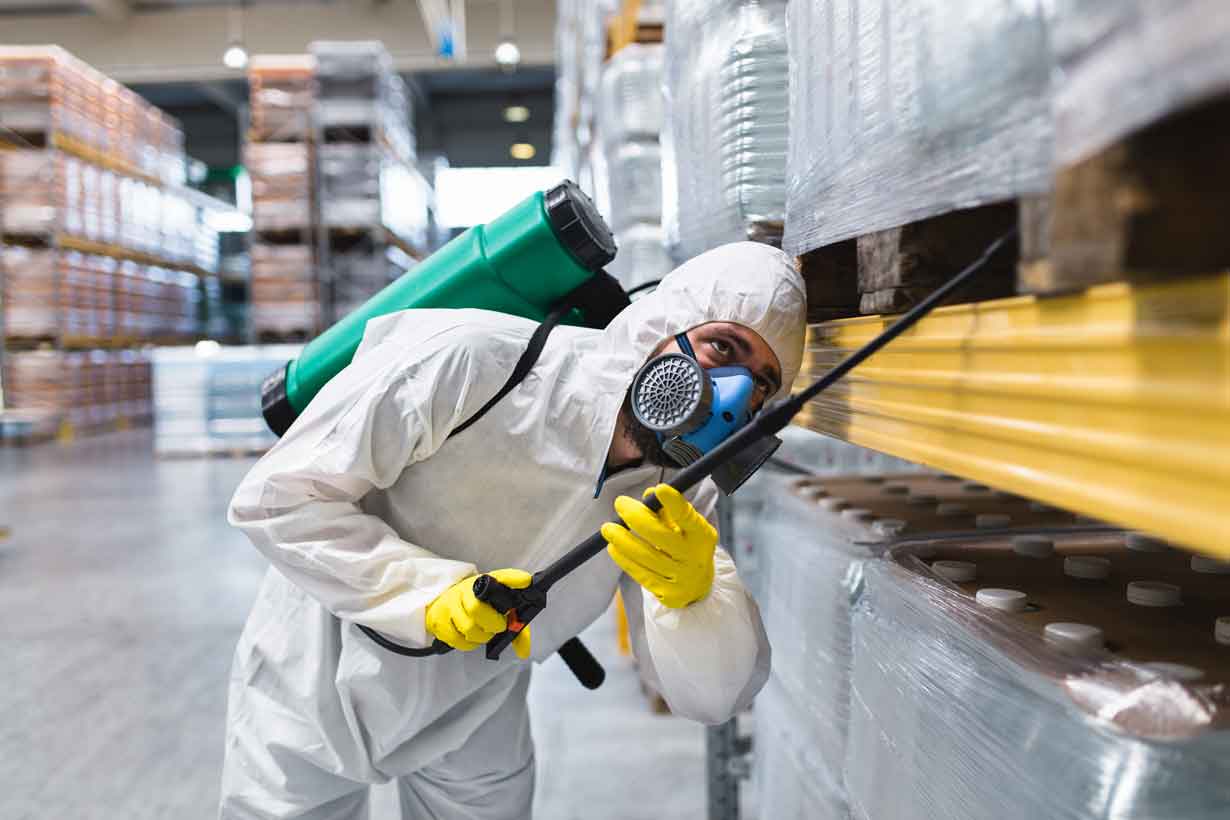

4 Tips for Winter Floor Protection
By Grainger Editorial Staff 12/29/24
Winter weather can damage floors and increase slip risks. Learn how matting, mopping, deep cleaning and sealing can help protect flooring and help keep facilities safe during the cold months.
In much of the country, winter means snow, slush and ice melt, which means headaches for building managers. The mess that winter weather leaves behind can lead to slips and trips, so OSHA requires that employers keep walking-working surfaces free from snow and ice. Tracked-in salt and snow are hard on the floors, too, accelerating wear and tear.
Here are five tips you can use to help reduce the risk of falls and extend the life of your flooring:
1. Rethink Your Matting
The right entry mats can do a lot for you. Facility Executive notes that matting can reduce the amount of dirt entering a facility by as much as 90%.
High-performance matting systems typically have a few components. First, rougher outdoor matting scrapes dirt and debris from shoes and boots as people approach the entrance. Then, one or two zones of increasingly soft and absorbent indoor matting finish the job of cleaning and drying the soles of people's shoes and boots as they enter the building.
So how much matting do you need? Many manufacturers recommend installing 15 feet inside the entrance, enough to give people three sole-cleaning steps on the matting with each shoe before their soles hit the bare floor.
2. Keep on Mopping
Even with effective matting, some dirt, debris and liquid will enter your facility. Frequent mopping will help prevent the buildup of dirt and water as well as salt and other ice melt products.
Salt is abrasive and can damage floors as it accumulates. Calcium chloride, another common ice melt product, can leave a greasy residue, according to Sanitary Maintenance, which states that green ice melt products can have less impact on finished floors and recommends using a neutral cleaner to remove ice melt buildup. Your crew may also need to change mop water more frequently.
3. Go Deep
During winter, sticking to your normal maintenance schedule is more important than ever.
According to Cleaning & Maintenance Management, keeping up with regular deep cleaning during the winter months can return floor finishes to like-new condition, improving the floor's customer appeal and lengthening its lifespan. Deep cleaning floors can also remove hidden dirt and debris that can accumulate rapidly over winter and wear down protective floor finishes.
4. Seal It Up
A good seal or finish on your flooring can help protect it from winter damage and deep stains.
Facility Executive recommends resealing floors before winter arrives. When that's not possible, scrubbing and recoating may be the next best option.
Bonus Tip: Check Your Lighting
It won't protect your floors, but lighting can help protect the people walking in and around your building. OSHA lists poor lighting as an environmental condition that increases the risk of slips and trips. And lighting is especially important in the winter when the prevalence of slippery walkways increases and daylight hours diminish. It will usually be easier to work on outdoor fixtures before winter arrives, so planning ahead is a great idea.
See more winter preparedness tips to help keep your facility running smoothly.

Safety Management
6 Tips to Help Prevent Slips, Trips and Falls
Identify the fall hazards in your workplace and implement a fall safety program. Check out these tips from Grainger so you can mitigate risk.
![]() OUR LATEST KNOWHOW
OUR LATEST KNOWHOW

Equipment
Facility Pest Control: How IPM Helps Safely Manage Insects
Discover safe, compliant pest control with IPM. Find tips for insect monitoring, sanitation and safe insecticide use in commercial facilities.
The information contained in this article is intended for general information purposes only and is based on information available as of the initial date of publication. No representation is made that the information or references are complete or remain current. This article is not a substitute for review of current applicable government regulations, industry standards, or other standards specific to your business and/or activities and should not be construed as legal advice or opinion. Readers with specific questions should refer to the applicable standards or consult with an attorney.














